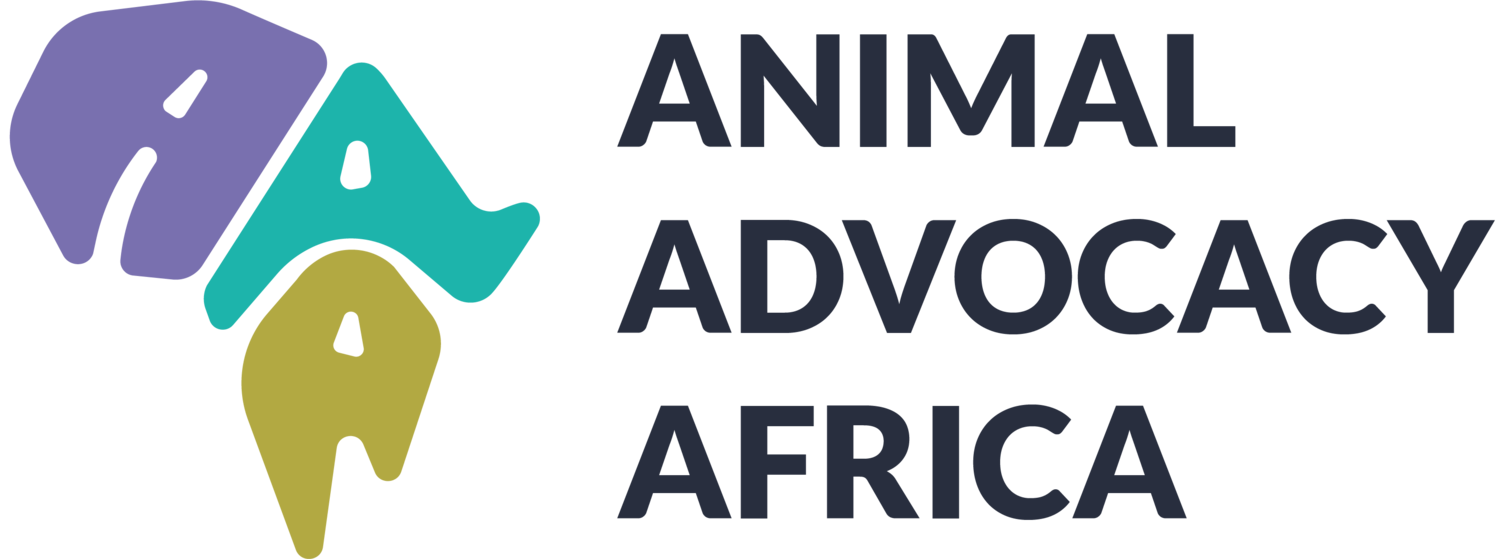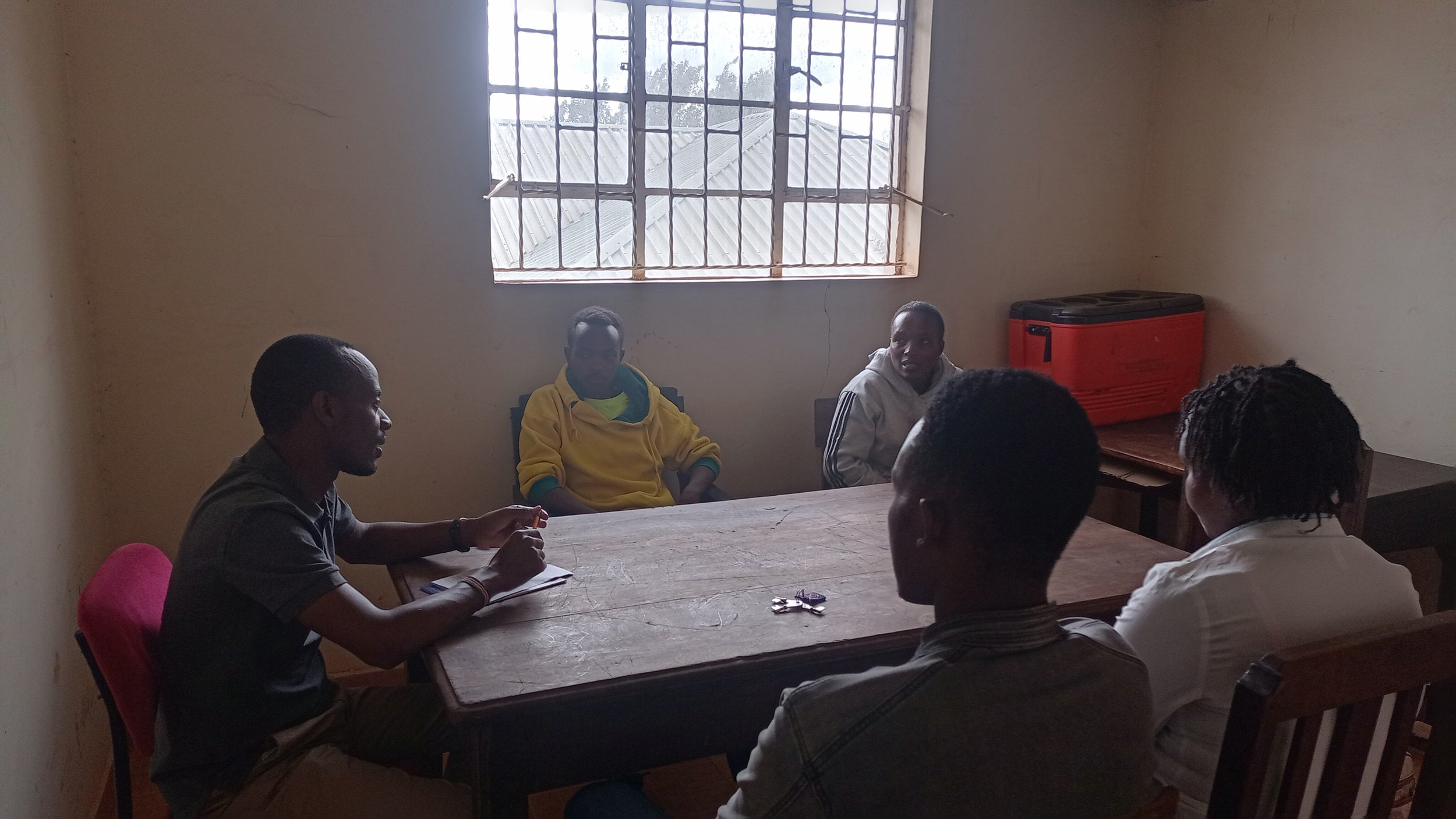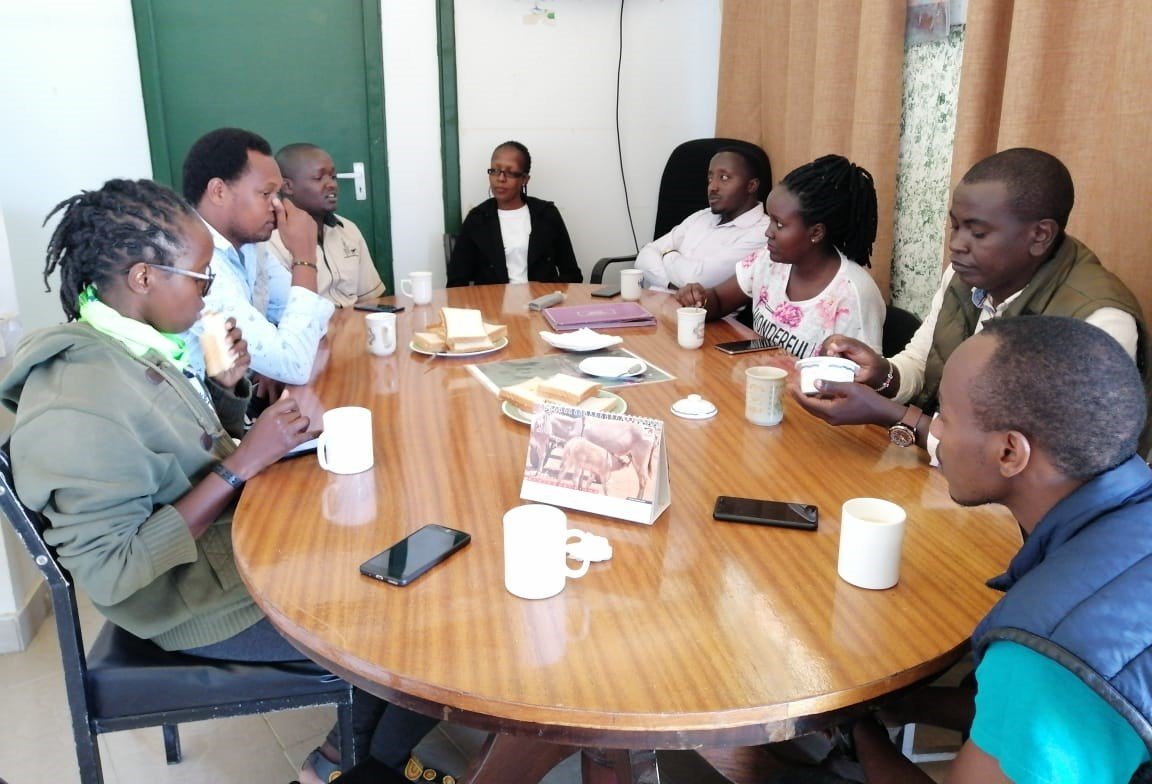Cage-free farming and egg production awareness by advocates
This second blog post is based on two projects that were run as part of our 2024 Intermediate training programme. Each project was run by one of our participants who implemented the project and wrote a report based on their outcomes and findings. As with our previous post, we have divided the reporting of these projects into themed blog entries, this one focusing on cage-free farming and egg production awareness campaigns.
Capacity Building Workshop on Chicken Cage-Free Production - Dennis Bahati
On 2-3 April 2024, two education and awareness sessions were conducted in Nakuru County targeting private and government animal health practitioners (AHPs) in Nakuru County on the benefits of a cage-free chicken production system. AHPs play a key role in enhancing livestock health and offering extension services that entail capacity building and educating farmers on best production practices. A total of 13 private and government animal health practitioners engaged in two workshop sessions on the significance of upholding welfare in chicken production.
Workshop Objectives
Highlighting the status of poultry production in Kenya
Discussion on chicken production systems in Kenya
Discussion on battery cage farming and its implications on chicken welfare
Discussion on the laws and policies in relation to battery cage use in Kenya
Highlighting the role of animal health experts in upholding chicken welfare and animal welfare in general
Pushing for a cage-free county
Workshop Discussions
Chicken Production in Kenya
The workshop discussions began with highlighting the current status of poultry production in Kenya. It was noted that the chicken industry in the country has been on the rise for the past 15 years. It had dramatically changed, moving from traditionally small family farms to a large agricultural industry. As of 2010, commercialization of poultry farming had been introduced and accepted by commercial farmers in Kenya through the government’s introduction of the Agricultural Sector Development Strategy (ASDS) in a bid to boost the poultry sector. Kenya has an estimated 28 million birds, of which 76 percent are free-ranging indigenous chicken and 22 percent are commercial layers and broilers. It was pointed out that annually, the country produces about 20 tonnes of poultry meat worth KES 3.5 billion and 1.3 billion eggs worth KES 9.7 billion.
Chicken production systems and caged farming
It was highlighted that there are three main chicken production systems in Kenya: free-range, deep-litter and battery cage. Advantages and disadvantages of each of the production systems were discussed in depth, and it was pointed out that the use of the battery cage system has been globally criticised for its violation of chicken welfare. It was noted that the battery cage system causes confinement which severely impairs birds’ welfare, as they are unable to express their natural behaviour, hence compromising their overall physical and psychological well-being. Use of cages prevented expression of natural behaviours, including nesting, perching, dustbathing, scratching, foraging, running, jumping, flying, stretching, wing-flapping, and even walking. Additionally, the severe confinement restricted physical movement leading to metabolic disorders, including cage osteoporosis and liver damage.
Gaps within the policy and legal framework on chicken-caged farming
It was highlighted that an in-depth analysis in 2021 on the legislative framework governing Kenya’s poultry industry, neither enacted nor unauthorised the battery cage system. This lack of a legal decree boosted the utilisation of the caged system among a growing number of small-scale farmers within several counties in the country targeting consumers in peri-urban and urban centres. It also propelled the importation, acquisition, and supply of battery cages from outside countries where their ethical use had been questioned and subsequently banned due to welfare concerns. Disguised by the prospect of alleviating poverty through job creation and upholding food security among low-income earners in Kenya, the battery cage system is bound to make a strong foothold with minimal government interference. No contemporary legal instrument addresses consumer rights exploitation and abuse of animal welfare freedoms. It was emphasised that animal health practitioners play an important role in the development of county-by laws and policies that protect animals from cruelty. Participants were encouraged to engage their county assemblies and propose the development of legal degrees to ban the use of battery cages among their farmers.
Role of animal health practitioners in addressing chicken caged farming
Discussions were held on key roles AHPs could play in promoting cage-free production systems. Most AHPs initially understood that their primary role is enhancing food security by increasing productivity even if it means compromising on animal welfare. Participants were eager to learn more about the different aspects of chicken welfare and how they relate to enhancing productivity.
Some of the AHP roles discussed included:
Offering farmer extension services to identified farmers and educating them on the welfare issues associated with the use of battery cages.
Assisting farmers in transitioning to welfare-friendly and sustainable production systems through training and providing avenues of benchmarking with cage-free farmers. Providing an exchange program in which farmers practising caged farming can learn from those practising cage-free production and the benefits relating to that system.
Facilitating farmers in accessing markets for cage-free products after transitioning.
Advocating for the review and development of chicken welfare into county by-laws and policies.
After the discussions, all participants were tasked to engage two chicken farmers within the next 6 months who practise caged farming in the area and create awareness of the welfare issues associated with the system. Participants were requested to report on achievements and challenges encountered during the awareness sessions to enable documentation of successes as well as develop solutions to identified problems. Bi-monthly follow-up calls will be made with AHPs for progress concerning whether farmers have transitioned to cage-free systems. Dennis also plans to conduct one or two farm visits after 3 months to assess transitions by the target farmers.
Due to unavoidable circumstances, two participants pulled out from the workshop, and four were not available to attend on the agreed date. To ensure that they were still included in the activity, the four individuals were engaged on the following day to ensure that the objectives of the activity were met. Hence, the workshop was conducted over two days.
Online Campaign for Egg-laying Hens - Jo Fairbrother
This three-week consumer education campaign was focused on raising awareness around the suffering of hens in the commercial egg industry, specifically drawing attention to the millions of hens confined to battery cages in South Africa. The campaign was an interactive quiz challenging viewers to become informed consumers by engaging with educational content. The campaign was run on Facebook through a page created specifically for the project called The Food Integrity Project, which describes itself as a consumer education collective promoting transparency across food systems in South Africa. The focus was on egg-laying hens over other farmed animals given the scale and intensity of the problem. The content format was a quiz/survey format due to two past successes using a similar format.
Campaign results failed to meet expectations, specifically by the amount of users who completed the quiz (6) as well as final leads collected (3). Out of all the users who started the quiz, only 1.5% of them completed it.
Exploring the results
Content format
The content format was in a quiz/survey format. The decision to use this format was due to two past successes using a similar format:
A Facebook advert directing users to a survey asking the public about consumer perception of dairy in South Africa (results). This was used as part of a broader appeal to the Advertising Regulator Board on misleading advertising in the dairy industry. The case was ruled as misleading by the Advertising Regulatory Board's (ARB) appeal committee.
A ‘Meat-Free Monday South Africa’ educational quiz that ran on an older social media platform in South Africa called Mxit in 2011. On completion of a quiz, users gained an entry to win an iPhone resulting in a strong incentive to complete the quiz. Read case study here.
The ‘Know Your Food Challenge’ quiz was different in that the format was more complex. For example, each question and answer had its own page. This meant that a user needed to make the decision to click ‘next’ after each question and answer to continue to engage with the content. An assumption is that the combination of effort to move through the steps and the more cumbersome content format may have contributed to the low engagement rate.
Engagement length
People have short attention spans and the process was simply too long. The quiz stated clearly at the beginning that it would take 1-2 minutes to complete. The average time spent on the quiz landing page was 00:11 seconds, while the average time users engaged with the quiz in total was 00:35 seconds.
This means that most people didn’t read beyond the first page, or they only completed the first one or two questions before dropping off.
Campaign messaging
The advert challenged users to ‘Know Their Food’. After clicking on the advert, the content then changed to depressing facts about chicken cruelty. The method could have been seen as bait and switch and viewers could have felt misled, but more research is needed to confirm this assumption. On the other hand, fewer viewers may have clicked on content if they knew it was about chicken cruelty. Feedback on the name was that it sounded more ‘health related’ than ‘humane education’ related. Ideally, user interviews as well as focus groups could be conducted to further explore these assumptions.
Targeting & platform
The campaign targeted South African Facebook users based on the following criteria:
Age: 18-35; Gender: 56.9% Women, 43.1% Men
Interests: Organic food (food and drink), Rabbits (animals), Volunteering (social causes), Vegetarianism (diets), Cats (animals), Dogs (animals), Recipes (food and drink), Horses (animals), Charity and causes (social causes) or Veganism (diets) and Education Level: At high school or At university
No research was conducted on which platform or audience would be the most successful. TikTok, Instagram or other platforms may have performed better.
In addition, carefully planned organic outreach may be a far better method of distributing the campaign. For example, encouraging advocates in like-minded communities to share with friends and family who will be more open to content from a trusted source may be more successful.
Summary
The campaign was intended to cover step one of awareness raising in the Ten Conditions for Change Framework, a framework for creating positive behaviors. Its intended effect was for viewers to eventually consider a behaviour change. It is a broad-reaching campaign that casts a wide net. Content should be shorter, the medium should be easier for users to engage, messaging should be tighter, and more research into platforms and audience is needed.
Lastly, quiz and gamification formats may be better suited to more intentional humane education programs, such as schools, that do not run solely on social media where the attention economy is already saturated.





